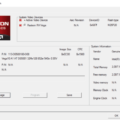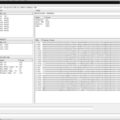

AMD Memory Tweak XL – tool for optimizing AMD GPU VRAM performance
Modifying the BIOS of an AMD video card with other operating frequencies or improved memory timings, and then flashing it to the GPU was the main choice of crypto miners for a while. Due to the introduction of BIOS signature verification in the AMD video driver some time ago, this also required users to fix the video drivers in order to continue using them with more recent video drivers. Earlier this year, the AMD Memory Tweak Tool was released, which turned into a pretty useful alternative to modding the BIOS. The latest AMD Memory Tweak XL technology makes it easy to change memory timings, memory straps, or PowerPlay on the fly, as well as access ADL Overdrive and MMIO Register Control on newer AMD GDDR5 / HBM-based graphics cards. This means that you can change the settings and apply them directly, as well as check how they will affect performance and stability, the changes are not permanent, and as soon as there is any problem, you can easily return to the default values.
The AMD Memory Tweak XL tool requires that you have the .NET Framework 3.5 installed in order for it to function, if it is not available on your system, it will automatically detect it and offer to download it for you … although trying to install it may cause various problems some mountain installations. In addition, for the tool to work correctly, Windows must be in test mode, it will offer to put you in test mode if you are not currently working, and there is a button to easily return to normal operation. AMD Memory Tweak XL was originally intended for more advanced users, although you should be able to quickly master what needs to be modified and how to improve performance. You can look at what other users have reported as settings that give the best performance on their specific mining GPUs, and try them, and experiment with the capabilities of your AMD GPUs. Even if you already have a modified BIOS video, you can still play with memory straps, for example, to slightly improve performance and check even better settings before applying them with the new BIOS modification.

GitHub:
Usage & Instructions AMD Memory Tweak XL
Global command line options
| Command | User Input | Extra Info |
|---|---|---|
| – -help | Show this output | |
| – -version|–v | Show version info | |
| – -gpu|- -i | Comma-Seperated gpu indices | Selected device(s) |
Support
- GDDR5 Based AMD GPU’s
- HBM / HBM2 Based AMD GPU’s
- Linux
- Windows (Beta)
Requirements
- One or more AMD Radeon GPU’s
- amdgpu-pro | ROCM (Verified working on amdgpu-pro 18.30)
- Adrenaline (Verified working on v19.4.1/v19.5.*)
Example Usage (Linux):
$ sudo ./amdmemtool --i 0,3,5 --faw 100 --RFC 100
Example Usage (Windows):
C:\Users\You\Desktop\WinAMDTweak.exe --i 1,2,4 --rfc 100 --RC 100
These are just examples! Don’t try these at home!
Make sure to run the program first with parameter –current to see what the current values are. Current values may change based on state of the GPU, in other words, make sure the GPU is under load when running –current. HBM2 Based GPU’s do not need to be under load to apply timing changes. It is often better to apply new timings before starting a benchmark/mining tool.
Hints: Some timings are stability timings, lowering these will lower stability. Such as tRC. Some timings might require a higher value for performance to improve. Such as tREF. Some timings have a min/max value, going outside this range will result into it defaulting back to original value. Such as tCL Some timings are dynamic, they change based on the vbios values and active clocks. Dram timings. …
Row Access Timings tRC, tRAS, tRCDRD, tRCDWR, tRRDL, tRRDS, tFAW, tRTP Column Access Timings tCCDL, tCCDS, tCCDR, tWTRL, tWTRS, tRTW, Refresh Timings tRFC, tRFCSB, tRREFD, tREFI
Some extra info
Still not all possible timings have been exposed. However, it’s not such a big deal to add more of them in the tool. The ones available are more or like the most important ones.
Some users have reported very nice results already, please continue to contribute to these results.
Have fun!
If you like to read such articles and want to support the author, then you can subscribe to our telegram channel and recommend us to your friends, this will help a lot to support our project! Telegram:
Be the first to know all the news, read more about cryptocurrencies and mining at CRYPTO-MINING.BLOG.
Recommended Related Articles:
What awaits Bitcoin after the 2024 halving?
The popular crypto analyst shared his vision of the development of the situation in the Bitcoin market ahead of the expected halving in April 2024. According to his analysis, the movement of the first cryptocurrency after the reduction of miners’ remuneration traditionally falls into four characteristic phases. In his opinion, if we focus on updated…
How to create, use Kaspa Wallet
Kaspa wallet is known for its user-friendliness, reliability, and high-level security features. The wallet has been built on the Bitcore platform with many lines of security such as 2-factor authentication, multi-sig support, and hardware wallet support to support digital assets stored in it. The wallet is also applauded for its smooth user interface, which makes…
BTCTools v1.3.1: Download, ip-scanner, overclocking for Windows
BTC Tools is a tool to scan, configure, reboot and update most Antminer, WhatsMiner, Innosilicon or Avalon ASICs. The utility includes ip address scanner, monitoring, batch management of overclocking of miners. … Continue ReadingBTCTools v1.3.1: Download, ip-scanner, overclocking for Windows













2 Comments So far